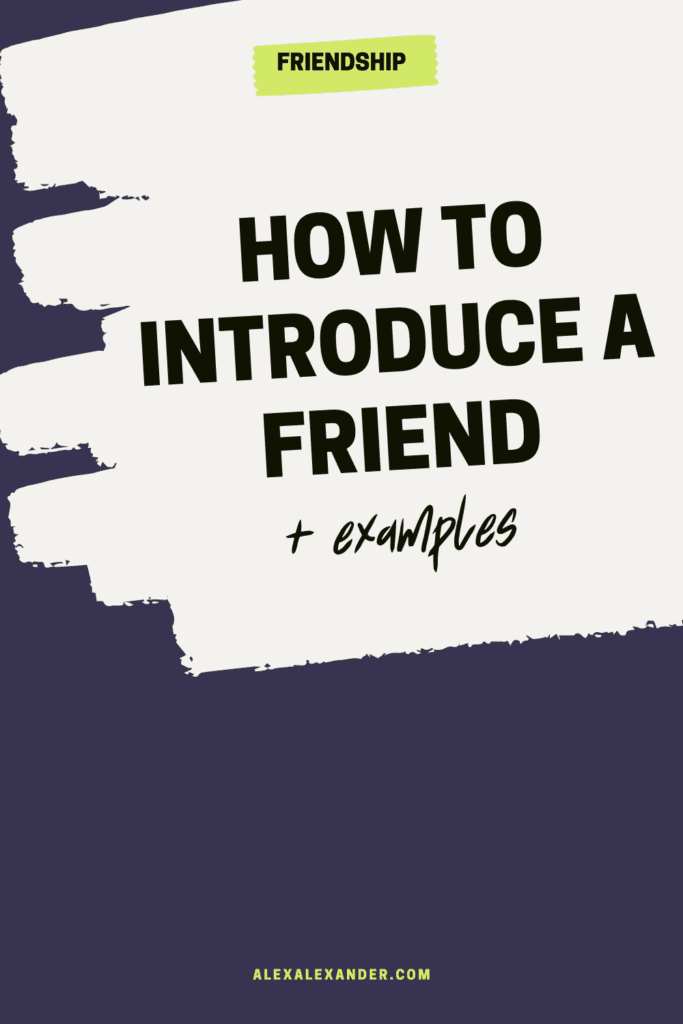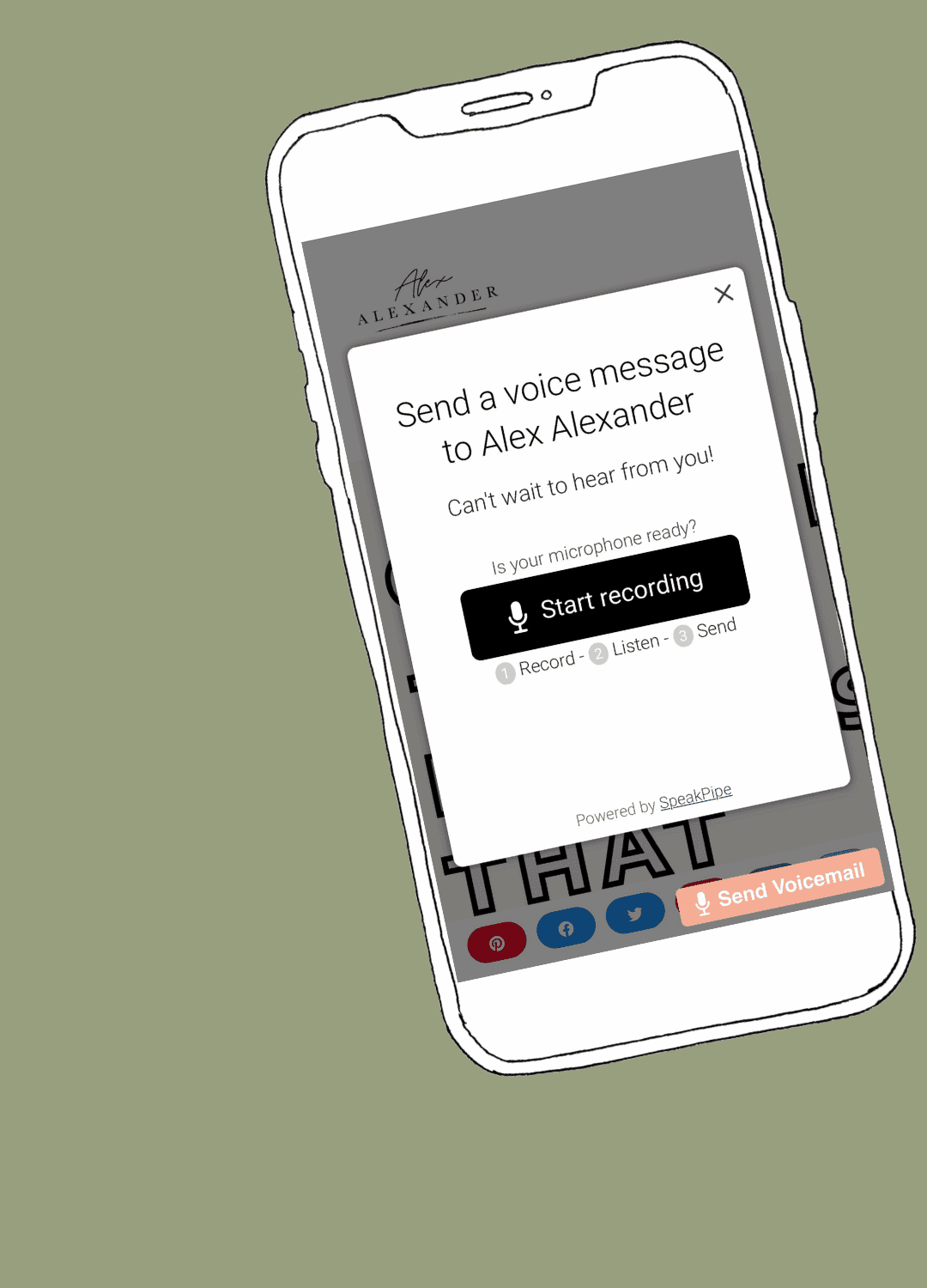
Why does “introducing my friends” matter in the grand scheme of things?
Although society may tell us to simply make a few friends and hold onto them for life, this is not usually how our social lives play out.
Everyone needs to be open to forging new connections.
Why?
We constantly change, and as we develop different hobbies, ambitions, values, and life experiences, we need people to share those new parts of our lives. [Read about Shared Experience Roots]
PODCAST EPISODE! Want to learn more about shared experience roots? Listen to my episode on the three kinds of roots here.
Though it would be amazing if our closest friends could grow with us in every way as we mature, that’s just not possible. We are too complex! There are too many ways we are changing! As we all head down different life paths, we don’t have to go through life alone.
Many self-help books will tell you, “it’s lonely at the top” or “we have to get used to being on our own,” but let’s stop perpetuating that nonsense.
There are people who share our new interests, ambitions, and life experiences, and we just have to be open to finding them.
Why is this important?
Feel content with your social circle? We can be satisfied with the people in our lives AND stay open to new connections.
Feel lonely? Know that there are people out there who share your interests, and you can make those connections over time.
PODCAST EPISODE! Take control of your social wellness. Listen here.
What about the joy of being able to connect two people?
Our social circle is like a vast web. We never know what connections might create lifelong friendships, pickleball partners, new book club members, or even someone’s best friend for the latter years of their life.
There is a certain satisfaction to knowing our friends well enough (an emotional intimacy root!) to set them up for a conversation that lights them up, not a conversation full of pleasantries.
So today, Let’s talk about how to introduce friends.
An introduction can be a fast track to a new connection.
How many times have you introduced friends like this?
“J, I want to introduce a friend. Meet A. A and I went to college together.”
By the end of this article, you’ll know how to introduce your friend in a creative way instead of the boring first introduction. An introduction like this:
“J, I want you to meet A. “J introduced me to my spouse back in college. A and I met over a late-night craving for tacos freshman year. I am not sure how you’ve never met! We all went to the same college. A and I haven’t talked in a few years, but we recently connected again. She’s about to depart on a month-long adventure to Europe. You both might have something to talk about since I know J went to Italy last year.”
Now, as you walk away, they have a variety of topics to choose from:
- Traveling to Italy
- Their shared experience of going to the same college
- Where else they both have gone in Europe
- Maybe even a mutual love of tacos.
Can we all agree that the second introduction has set our friends up for a more enjoyable conversation?
Let’s dive into how to introduce someone.
How to Introduce Friends
How do you introduce your friends? Have you ever thought much about this very mundane, everyday conversation? Sometimes the simplest parts of our life add up to make the most significant overall impact, and I’d venture to say that making introductions is one of those small acts that add up over time.
Consider the purpose of this friendship introduction
There could be various motives for introducing two friends:
- They are both important to you. You want them to know that.
- They share similar interests or experiences.
- Getting to know each other could be mutually beneficial to them both.
- There is a professional connection.
- One friend has experiences with something the other friend is interested in.
- They will be interacting with each other in some way.
Every introduction is an opportunity to showcase why two people getting to know each other would be enjoyable for both parties.
Quite often, the default is to introduce someone using their job title.
Can we all agree to stop doing that?
Sure, if you are in a professional setting, go ahead, but even in a professional setting, what if you made an introduction based on their best skill, most recent project, department, and “why” for their career?
These other descriptors remove hierarchy and set the two people up for a neutral conversation.
Personally, I believe that using job titles is a dull way to connect people. It doesn’t give justice to our friends as individuals – their hobbies, their dreams, and their backgrounds.
Yes, we spend many hours of our lives working… but that doesn’t define us. Let’s focus on making better introductions, shall we?
Instead of defaulting to the same old ways you always make introductions, pause for a moment.
Ask yourself, “Why am I introducing these two people?”
Taking the time to reflect will enable you to execute an intentional introduction.
If there isn’t a clear purpose, the purpose might just be “to avoid the uncomfortable feelings of searching for common ground.” You know these two people! Help them find common ground and set them on the path towards a conversation that will light them both up.
If possible, start by give your friends a heads-up.
There is a party tomorrow, and you already have two friends in mind that you’d like to introduce to one another. I love to see it!
It’s a great idea to give them a heads-up before, especially if either of your friends are on the more reserved side. It could be as simple as saying something like, “Hey J, I have this one friend I’d love to introduce you to at the party. Her name is A. I’ve wanted to introduce you two for a while. I’m sure you’d love to swap stories about your favorite travel spots.”
Are you hosting the party?
First of all, read my 6 Roles of Hosting Guide because making introductions falls in the “Day-of Host role,” which happens to be one of the most important roles of any gathering.
Now, any guest can make introductions, but if you are the day-of host, consider sitting down with the guest list a day or two before the gathering and creating a mental list of who might enjoy meeting who and attempting to facilitate those connections at the party. Planning the most effective ways to introduce friends is the main role of the day-of host.
HOSTING A PARTY INVOLVES 6 ROLES.

stop doing it all. Start hosting with ease.
Create more connection with your friends and family at your next gathering using the tips in this guide. Learn how to delegate the 6 roles of hosting and feel confident in your ability to throw a successful, stress-free gathering.
Bringing a friend that doesn’t know anyone else to a party?
Brainstorm other guests you might know at this party. What similarities do they share with your friend? How might you make some impactful introductions? Spend a few minutes thinking about how you will introduce someone that matters to you.
Get to the point.
It’s time to make the introduction. The best way to introduce two people? Keep the introduction straightforward. It should be evident why you thought these two friends would like to meet.
- Don’t include superfluous information.
- Don’t talk about yourself if it doesn’t add value to the introduction.
- Keep things positive. No embarrassing stories or inside jokes.
When in doubt, ask yourself, “Where do my friends take the conversation from here?”
Use the initial sentences to declare why you thought they would want to get to know each other.
Some examples:
- “R meet S. I have wanted to connect the two of you for a while – You both tell me all your rock climbing stories! I know R just went on a climbing trip to Austria recently.”
- “J meet A. Your little ones were born only a month apart. It’s been so fun to watch you both become parents. A, I know you just joined a PEPs group. That’s something J considered. How do you like it?”
Lead your friends on a clear path toward a shared interest or experience.
Know when to exit the conversation.
It takes a certain amount of emotional savvy to recognize when it’s time to stay and when it’s time to leave a conversation.
If this is something you want to learn more about, check out this article by Social Self on “How to Introduce Friends to Each Other.”
Let’s say you’ve made the introduction. A few things might happen.
- They hit it off! You also have a little one. You stick around, and all have a great conversation about your shared experience of being new parents.
- They have hit it off! They are talking about their mutual interests, life experiences, or connections. Let’s say they dove into talking about rock climbing… but you don’t love rock climbing. In fact, you know very little about the sport. If you stay in the conversation, they continually backtrack to explain basic terms or references. If you connected them so they could nerd out on rock climbing, this might be a great time to excuse yourself.
- They have trouble finding common ground. You might suggest a few additional connection points or leading questions to help them find a conversation that might be interesting. “J, when you were traveling, didn’t you tell me about this hidden gem you found in Berlin? A is heading there next month.” [Read about Shared Experience Roots]
- The conversation didn’t work out. Sometimes, for whatever reason, the conversation just peters out. Think about offering your companion a graceful exit. “I am so happy I finally got to introduce the two of you. I apologize for doing this, but W just came in and could use a hand.”
Follow up with your friends.
Your two friends hit it off after you introduced friends last night! Why not take things a step further and ask if they’d like to be connected?
Before connecting them, get their permission before sharing contact details or sending introduction texts/emails. Respecting boundaries is an emotional intimacy root!
You might also consider organizing another way for them to connect in person. More on that in the next section.
Invite them both to another gathering.
Repetition is essential when building friendships and community. We need a variety of experiences together to build enough roots to feel connected.
You see, most people make friends through proximity. Our friends are people we meet in places we frequent – neighborhood, school, work, place of worship, or the gym, to name a few.
However, you don’t need school or work to make friends. We can all create proximity. We just need to put ourselves out there. Take the risk. Initiating contact! Send that, “It was nice meeting you! Would you like to meet up for a walk sometime?” text message.
Yet… most people find that intimidating.
So why not give our friends a helping hand?
Create repetition for these two friends. Invite them to various activities and gatherings. No need to be too obvious about it; just extend a casual invitation whenever it makes sense. Doing this will allow them to build connections, make memories, and discover shared interests over time.
If you’re eager to take your role as a cultivator of friendships and community more seriously, read my write-up on How to Host an Open House and begin hosting these events periodically to allow those in your life to form stronger connections.
Remember, you aren’t in charge of this friendship.
You aren’t responsible for shepherding this friendship. After facilitating a chance meeting or two, let these two friends take it from there.
PODCAST EPISODE! How to Make Friends as a Grown-Up. Give it a listen!
Final thoughts
We all have our own community.
The people in our community/our support system might not know each other, but they likely know of each other.
- “Oh… You are A’s gym friend! So nice to meet you.”
- “I’ve heard so many stories about you two when you were in college.”
- “She told me that you kept them fed after the baby came. So happy she had you.”
We are more connected than we realize.
Our communities are more expansive than we give ourselves credit for.
At the very least, mutual friends share you as a connection point. That’s a simple connection – acquaintances, formal community, or familiar friends are all valuable relationships to our overall social wellness.
Most people find “meeting new friends” to be uncomfortable, but we can help break the ice by providing thoughtful introductions amongst our friends.
Turn it into a game this year – How many times can you introduce friends this year? Just start by picking one or two and go from there.







